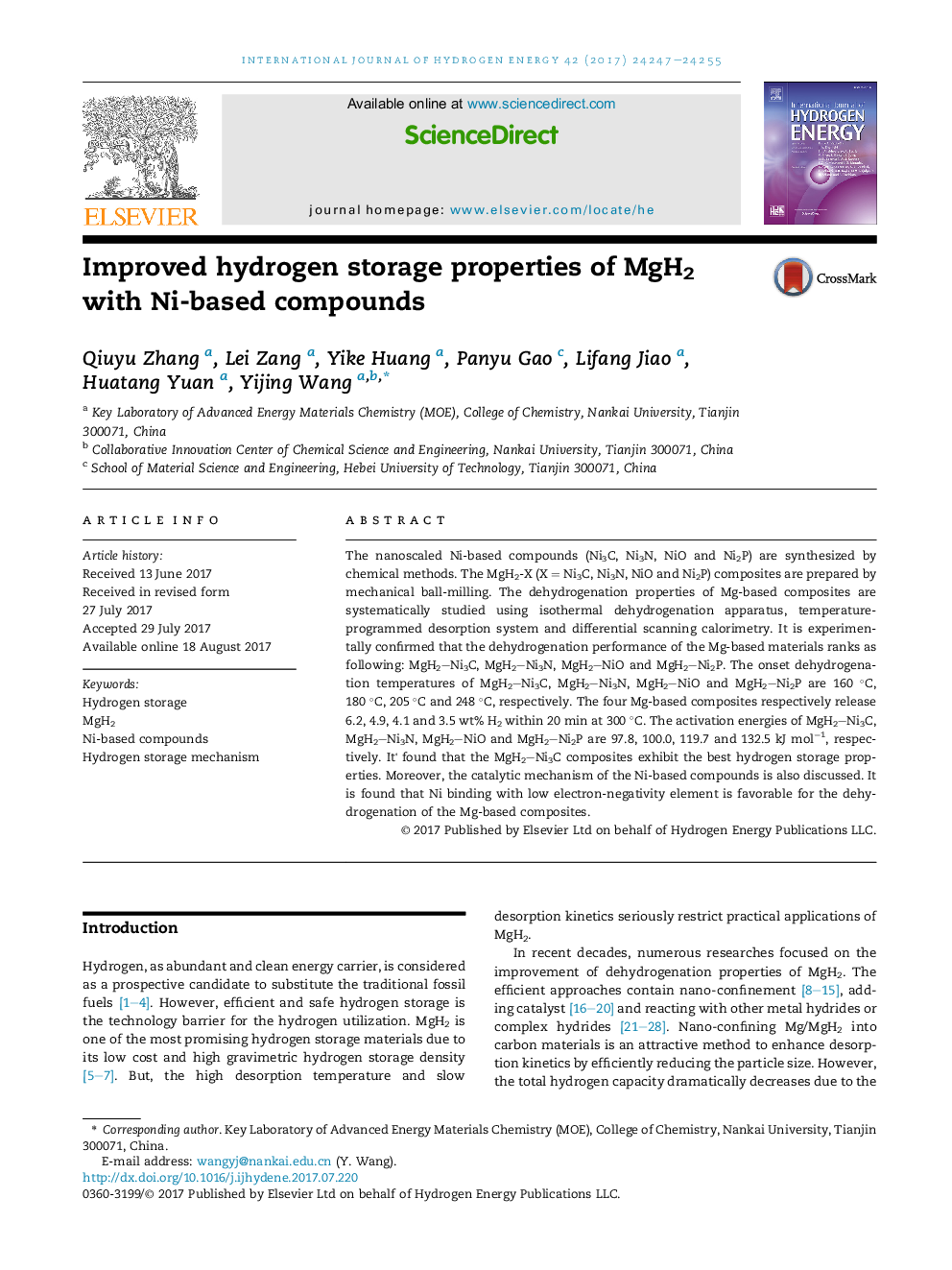| Article ID | Journal | Published Year | Pages | File Type |
|---|---|---|---|---|
| 5145216 | International Journal of Hydrogen Energy | 2017 | 9 Pages |
â¢A series of Ni-based compounds was prepared by chemical methods.â¢The MgH2-X (X = Ni3C, Ni3N, NiO and Ni2P) composites exhibit improved hydrogen storage properties.â¢The dehydrogenation performance ranks as MgH2Ni3C, MgH2Ni3N, MgH2NiO and MgH2Ni2P.â¢The MgH2Ni3C composites release 6.2 wt% hydrogen within 20 min at 300 °C.
The nanoscaled Ni-based compounds (Ni3C, Ni3N, NiO and Ni2P) are synthesized by chemical methods. The MgH2-X (X = Ni3C, Ni3N, NiO and Ni2P) composites are prepared by mechanical ball-milling. The dehydrogenation properties of Mg-based composites are systematically studied using isothermal dehydrogenation apparatus, temperature-programmed desorption system and differential scanning calorimetry. It is experimentally confirmed that the dehydrogenation performance of the Mg-based materials ranks as following: MgH2Ni3C, MgH2Ni3N, MgH2NiO and MgH2Ni2P. The onset dehydrogenation temperatures of MgH2Ni3C, MgH2Ni3N, MgH2NiO and MgH2Ni2P are 160 °C, 180 °C, 205 °C and 248 °C, respectively. The four Mg-based composites respectively release 6.2, 4.9, 4.1 and 3.5 wt% H2 within 20 min at 300 °C. The activation energies of MgH2Ni3C, MgH2Ni3N, MgH2NiO and MgH2Ni2P are 97.8, 100.0, 119.7 and 132.5 kJ molâ1, respectively. It' found that the MgH2Ni3C composites exhibit the best hydrogen storage properties. Moreover, the catalytic mechanism of the Ni-based compounds is also discussed. It is found that Ni binding with low electron-negativity element is favorable for the dehydrogenation of the Mg-based composites.
